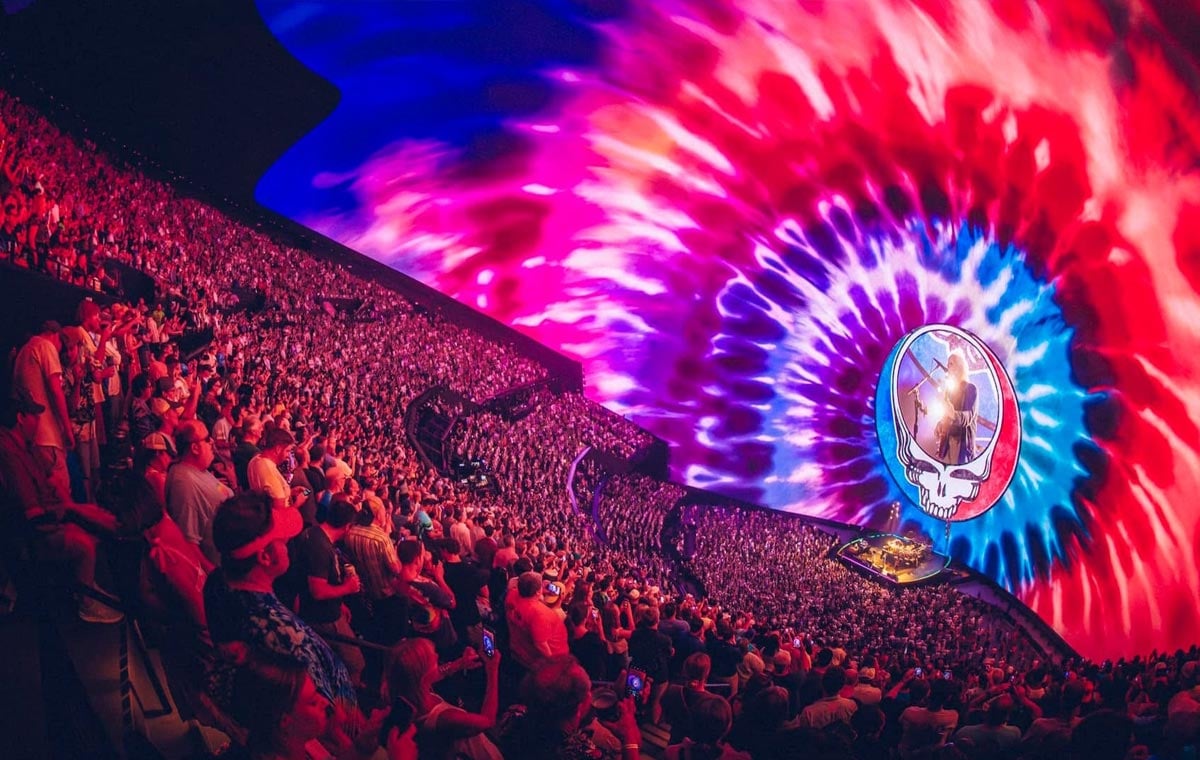Remember when Sphere in Las Vegas first lit up social media feeds with its colossal 366-foot orb? Within days, millions realized a new standard was being set for in-person experiences. Art, entertainment, and even educational programs were no longer something to observe as a spectator; they had become an active participant. They were something to experience in a mind-blowing 360-degree immersion. Today, you don't need to travel to Vegas to find an immersive dome experience. They're cropping up in city venues, museums, and brand activations around the world, and changing the shape of experiential marketing.
In this article, we'll explore the evolution of immersive domes, their rapid expansion, the technology that powers them, and how your organization can leverage these unforgettable guest experiences.
Immersive Dome Experiences Go Mainstream
Immersive domes aren't just catching on, they're actively expanding from rare spectacles to widespread phenomena. Today, they can be a once-in-a-lifetime experience or a once-a-week night out. Here’s how immersive domes are reshaping various types of guest experiences.
Destination-Worthy
Sphere set the bar high. As the most expensive attraction ever built in Las Vegas, it boasts a 16,000 x 16,000 pixel interior LED screen, an exterior LED display covering 580,000 square feet, groundbreaking audio technology, and a price tag of $2.3 billion. The most impressive part? This 17,000-seat behemoth is an economic success. Ticket sales, sponsorships, and other strategic revenue streams have proven that immersive dome projects can genuinely thrive.
Local Attraction
With venues in Dallas and Los Angeles (and more on the way), Cosm is scaling the immersive dome concept to a more accessible format. Their 87-foot domes offer shared reality experiences in a 1,500-seat space, featuring live sports, concerts, Cirque du Soleil, and special film events, such as the much-anticipated 25th anniversary of The Matrix. Cosm’s approach demonstrates how immersive domes are raising the stakes for everyday entertainment.
Semi-Permanent
Dome theaters have long been a staple for planetariums in museums and science centers. However, many institutions are now either upgrading their dome theaters or installing new ones, opening up an exciting range of new experiential possibilities beyond traditional planetarium shows. These opportunities include rotating exhibitions, interactive educational programs, immersive art installations, and more.
Temporary Pop-Ups
Brands are turning to immersive domes to connect with audiences in entirely new ways. Festivals, trade shows, and high-profile events like SXSW and Coachella are the ideal places to convert curious guests into loyal fans with an unforgettable pop-up activation in a dome environment. Innovative companies like Fulldome.pro and Omnispace360 are removing the guesswork from planning these one-of-a-kind, short-term experiences.

The Evolution of Immersive Dome Experiences
Dome experiences have come a long way. From humble beginnings to high-tech marvels, understanding their history sheds light on why today’s domes are such an impressive feat of experiential technology.
1923 – Zeiss Planetarium
Almost a century ago, the Zeiss Planetarium in Jena, Germany opened its doors as the world's first planetarium, providing the earliest large-scale, shared immersive experience.
1973 – IMAX Dome Films
IMAX Dome, originally known as OMNIMAX, began offering large-format immersive dome film experiences, marking a significant advancement from traditional cinema formats.
1983 – Digistar System
In the early 1980s, Evans & Sutherland introduced Digistar, the first computer-generated planetarium projection system, offering revolutionary new capabilities for immersive star projections.
1990s – Digital Blending Technologies
By the late 1990s, advancements in digital blending technologies enabled seamless multi-projector setups, typically involving between three and twelve projectors, significantly enhancing the visual quality of dome experiences.
2002 – Digistar 3 Digital Projection
In 2002, Digistar 3 introduced the first fully digital, full-dome video projection system. This marked a major turning point from the constraints of traditional film projection.
2020s – LED Revolution
Today’s dramatic shift to LED screens is the most significant leap forward. Modern immersive domes feature curved LED screens that eliminate shadows and brightness issues associated with projection. A key breakthrough is that LED domes provide dramatically improved resolution and actual black levels that are unattainable by projection, substantially enhancing photorealism and the depth of the experience.
Advanced audio systems, such as HOLOPLOT’s beamforming and object-based audio, ensure personalized sound experiences for each guest. Additionally, contemporary domes incorporate sensory cues like infrasound vibrations, haptic seats, scent bursts, and wind effects to fully immerse visitors.
Real-time rendering engines like Unreal Engine now complement pre-rendered videos, allowing dynamic and interactive visual content at resolutions up to 18K. The computing power required to accomplish this is truly astonishing.
The takeaway? Today’s immersive dome experiences leverage an incredibly sophisticated array of hardware, software, and accumulated knowledge, offering experiential designers a whole new world of possibility.
Why Adoption Is Accelerating
Immersive dome adoption is growing thanks to several key factors. Over the past five years, the cost of LED screens has dropped considerably. At the same time, advances in artificial intelligence and game engines have reduced the price of computing power for content display.
The rising demand for in-person experiences has also propelled immersive domes into the spotlight. Museums and cities are increasingly recognizing domes as powerful visitor attractions and educational platforms, upgrading their existing planetariums and IMAX theaters to LED-based immersive theaters.
Notable examples include:
- Prague Planetarium (2025)
- Arizona Science Center (2025)
- Fort Worth Museum (2024)
- Konica Minolta Planetaria Yokohama (2022)
- Manten Nagoya Planetarium (2021)
What to Expect Next
Looking forward, the immersive dome market shows no signs of slowing down. The potential growth in hybrid live-virtual entertainment experiences, museum applications, and brand activations is fueling the momentum.
Sphere plans to open a second, more intimate location in Dubai. Cosm is actively rolling out venues in Detroit and Atlanta, aiming for 30 to 40 locations across the U.S. by 2030, similar to the historic expansion of IMAX theaters. Immersive domes under 60 feet are becoming increasingly popular solutions for trade shows and experiential marketing applications, prompting more vendors to enter the market with technical, logistical, and creative expertise.
Agile experiential agencies like Bridgewater Studio are emerging to meet the growing demand, capable of delivering masterful storytelling experiences optimized for 360-degree immersion. Real-time engines and AI-driven content solutions will further democratize immersive dome media production, enabling broader adoption without blockbuster budgets.
The Future of Immersive Dome Experiences
With audience expectations at an all-time high, these high-caliber dome experiences have set a new standard. Even temporary activations must now achieve a level of production quality once reserved for permanent installations.
The most successful projects will be those that begin planning early, budget realistically, and integrate storytelling and technology seamlessly. To achieve exceptional results, it's crucial to select a partner who not only excels at crafting compelling immersive dome experiences but also skillfully manages the technical intricacies to maximize the impact of your investment.
Bridgewater Studio understands the complexities involved in bringing these ambitious projects to life. As an end-to-end solution for strategy, design, content, media, technology, and fabrication, we help clients navigate the exciting but challenging landscape of tech-driven experiences every day. Ready to explore immersive domes for your next project? Let's talk. Book a no-obligation strategy session with Bridgewater Studio today.


.png)
.png)
.png)







